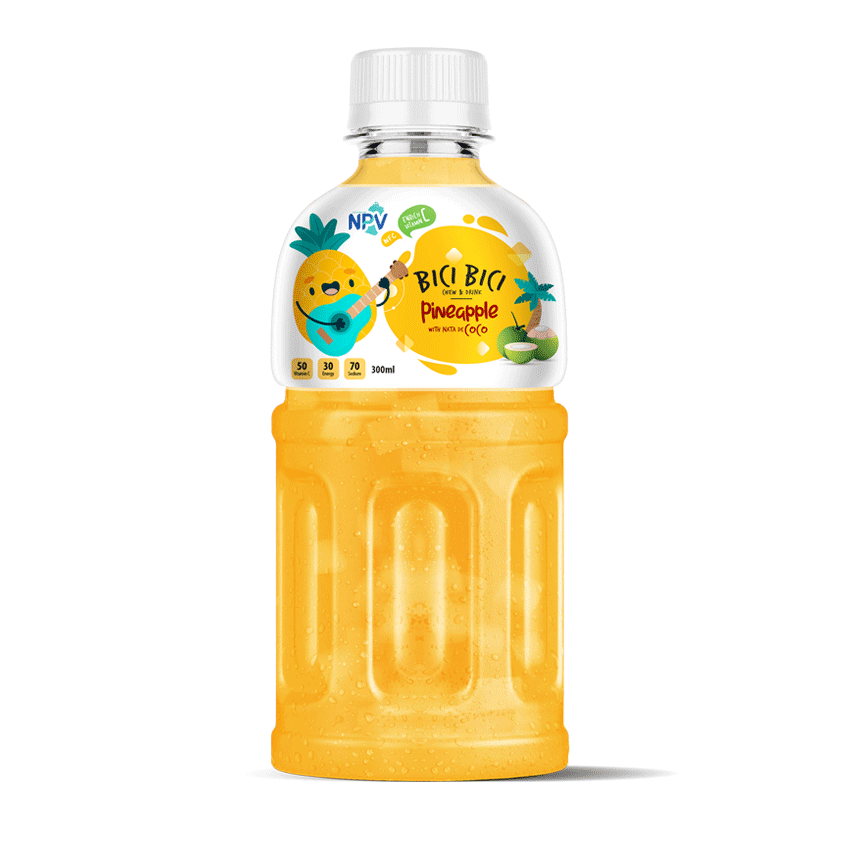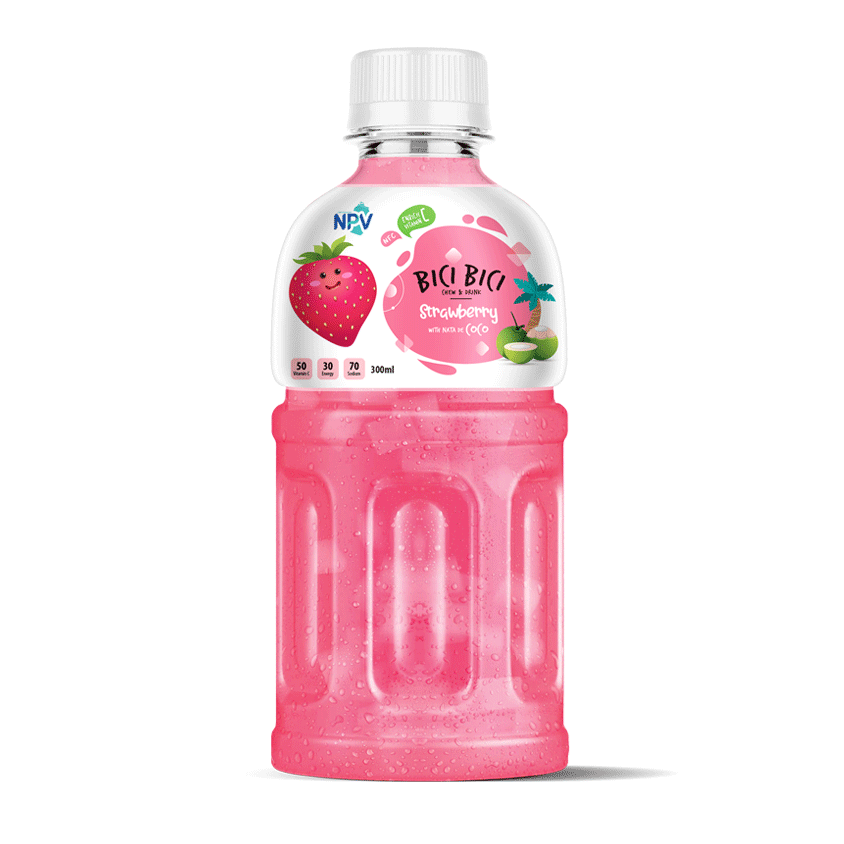What Is Nata De Coco?
Nata de coco, a chewy and translucent jelly-like substance, is widely favored in Southeast Asian desserts and beverages for its distinctive texture and flavor. Typically, it’s crafted by fermenting coconut water with bacteria to yield this unique substance. During fermentation, the process produces a gelatinous substance with a subtly sweet taste and a texture akin to gelatin or jelly. It frequently enters fruit salads, ice creams, puddings, and beverages like bubble tea. It is also known for its high dietary fiber content and low-calorie count, making it a popular choice for health-conscious consumers.

Nata de coco is widely used in Asian countries (Photo: Internet)
How To Make Nata De Coco From Coconut Water?
Ingredients
+ Fresh coconut water
+ Sugar
+ Nata starter culture
+ Clean containers
+ Cloth or paper towel
+ Rubber bands
Ensure that the coconut water is of high quality and freshness, as it dramatically impacts the ultimate taste and texture. 
You can make nata de coco at home (Photo: Internet)
1. Mix the coconut water and sugar in a clean container until the sugar completely dissolves. The amount of sugar can vary based on sweetness preference, typically around 10% of the total volume of coconut water.
2.After dissolving the sugar, gently add the prepared starter culture to the container and stir to distribute it evenly.
3. Cover the container with a cloth or paper towel secured with rubber bands to allow air circulation while preventing contaminants from entering. Place the container in a warm location with a stable temperature (around 30-35°C or 86-95°F).
4. Allow the mixture to ferment undisturbed for about 7-10 days. During this time, the bacteria in the starter culture will consume the sugar and convert it into cellulose, forming the jelly-like texture.
5. Check the consistency after the fermentation period by gently pressing it with a spoon or fork. It should have a firm and chewy texture similar to gelatin. If the texture is too soft, continue fermenting for a few more days until you achieve the desired consistency.
6. Harvest by carefully cutting it into cubes or desired shapes. Rinse it with clean water to remove any residual culture or excess sugar, and store it in a separate container filled with coconut syrup or sugar syrup to keep it moist and prevent drying out.
Is It Good For Your Health?

Nata de coco can bring many benefits to your health (Photo: Internet)
1.Low in Calories
With its low-calorie content, it is an excellent option for individuals aiming to control their calorie intake.
2.High in Dietary Fiber
Nata de coco boasts a high dietary fiber content, which supports digestive health and aids in preventing constipation.
3.Hydration
Being made from coconut water, it can help in hydration due to its high water content.
4.Gluten-Free
For individuals with gluten sensitivities or celiac disease, this jelly provides a safe option as it is naturally gluten-free.
5.Vitamins and Minerals
It includes trace amounts of essential vitamins and minerals, like potassium and magnesium, naturally in coconut water.
6.Versatile Ingredient
Nata de coco can be incorporated into various dishes and desserts, adding texture and flavor without significantly increasing the calorie or fat content.
In moderation, it can complement a balanced diet with its nutritious and delightful qualities.
Delicious Dishes Made From Nata De Coco
You can combine nata de coco with many different ingredients to create delicious dishes
1.Fruit Salad
Combine it with various fruits like pineapple, papaya, mango, and strawberries for a refreshing and colorful fruit salad.
2.Tapioca Pudding:
Combine cooked tapioca pearls with nata de coco, coconut milk, and vanilla to create a creamy and tropical tapioca pudding.
3.Pancakes
Incorporate it into pancake batter to enhance chewiness and sweetness. Pair with fresh fruit and maple syrup for a delightful flavor combination.
4.Coconut Water
Mix with fresh coconut water for a refreshing and hydrating beverage.
5.Coconut Milk
Mix with coconut milk for a rich, creamy coconut-flavored drink.
6.Fruit Juice
Combine nata de coco with fruit juice, such as pineapple, orange, or lychee juice, for a fruity and flavorful drink.
7.Smoothies
Blend the delicious jelly with fruits like strawberries, bananas, or mangoes to create delicious and creamy smoothies.
8.Soda
Combine with water or flavored soda for a fizzy and fun beverage—lemon-lime soda or ginger ale pair well.
These are just a few ideas to get you started, but feel free to experiment and contact creatives about how you incorporate nata de coco into your dishes.












